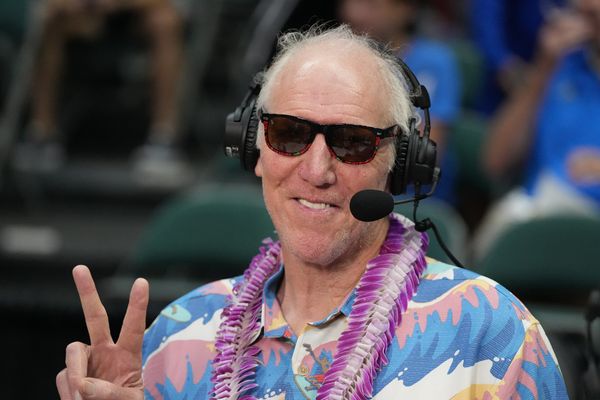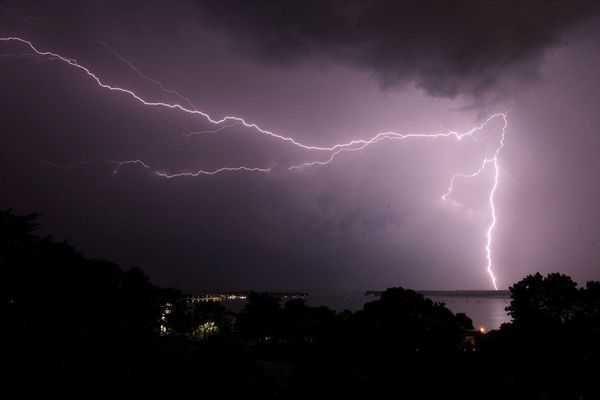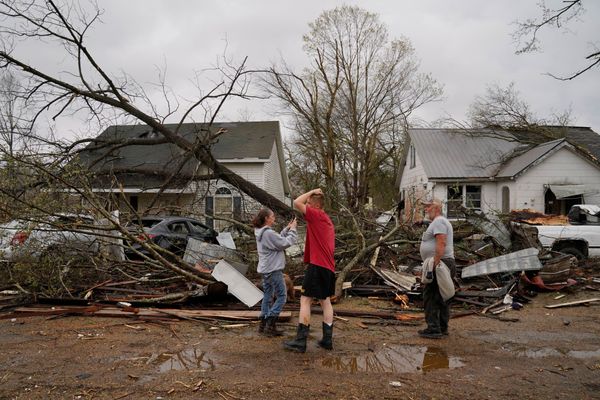
t is September 19, 1932, and morning has just dawned on Bombay (now known as Mumbai), but dignitaries are already crowding the front porch of the Indian Merchants Chamber Hall. They have an urgent mission: to save MK Gandhi’s life, and they have less than 24 hours to do so. For weeks, tensions have been rising between Gandhi, lodged in a prison in what was then Poona, on sedition charges, and Bhimrao Ramji Ambedkar, who would go on to steer India’s Constitution, over the latter’s demand of separate electorates for India’s “depressed classes” or “untouchables”, who are called Scheduled Castes (SC) today.
Separate electorates meant that members from these communities would elect a representative to legislative assemblies, and caste Hindus would not be eligible to vote in that election. After protracted negotiations at the second Round Table Conference, the British government had formalised separate electorates on August 15, 1932. Almost immediately, Gandhi publicly opposed this.
“I have to resist your decision with my life,” he wrote to the then British Prime Minister Ramsay Mcdonald, on August 18. “What I am against is their statutory separation even in a limited form, from the Hindu fold…” he reiterated on September 9, but the British refused to renege on their decision.
On September 20, Gandhi began his fast unto death. Raja Sekhar Vundru notes in his book, Ambedkar, Gandhi and Patel: The Making of India’s Electoral System, Gandhi’s emissaries had communicated that he was not only opposed to separate electorates, but was also not convinced of reserved seats. “I shall not deter from my pious duty and betray the just and legitimate trust of the people even if I am hanged,” Ambedkar told the Congress, reiterating that his problem with joint electorates was that depressed classes would be robbed of independent leadership in a constituency numerically dominated by caste Hindus.
With time running out, leaders proposed a two-tier system: a primary election where only Dalits would vote and a secondary election where both caste Hindus and Dalits would vote. On the morning of September 22, Ambedkar travelled to Poona. “I want political power for my community. That is indispensible for our survival,” he told Gandhi, Mahadev Desai, Gandhi’s secretary, wrote in his notes.
The pressure on the Maharashtrian was mounting; he had received several death threats already. “Almost all major newspapers were backing Gandhi and opposing Ambedkar. His blood pressure, whether he had water, were front page news every day,” said scholar and cartoonist, Syamsundar Vunnamati. Ambedkar finally relented after his friend and Tamil leader, MC Rajah, pointed out that Dalits would battle insurmountable prejudice if they were seen as not having compromised for Gandhi’s life.
The Poona Pact was signed at 5pm on September 24 by 23 people. Madan Mohan Malaviya signed it on behalf of Hindus and Gandhi; Ambedkar on behalf of depressed classes. Instead of the 80 seats given by the British, the depressed classes got 148 seats. At the end of the talks, Gandhi’s trusted emissary, C Rajagopalachari, exchanged his fountain pen with Ambedkar.
The Poona Pact represented a clash of two ideas: of caste and citizenship. Ambedkar’s reading of caste, according to historian Prabodhan Pol, pivoted on seeing the Dalit question as a political issue, and not only a social one, as Gandhi did. “The Gandhi -Ambedkar conflict was over how to understand caste. Ambedkar insisted, for the first time in India’s modern history, that caste was a political question, and couldn’t be addressed by social reforms only,” he said.
In his writing and speeches, Ambedkar insisted that a political democracy was meaningless if the so-called depressed classes were not equal participants in it.
“Most importantly for Ambedkar, the ability of the depressed classes to elect their own representatives was a way to achieve full potential of democracy. For this, voting in an electorate free from the influence of caste Hindus was required, and Gandhi did not understand this,” said Sumeet Mhaskar, an associate professor of political science at OP Jindal Global University.
Gandhi’s reading of caste fundamentally differed from Ambedkar, explained Suparna Gooptu, director of the Gandhian Studies Centre, Kolkata. While Ambedkar preferred a rights-based approach, Gandhi’s approach was through faith and spirituality. “Unlike Ambedkar, Gandhi felt that any exploitative relationship could be rectified only when the exploiter had a change of heart. So he worked with upper castes to change their mindset,” she added.
Nishikant Kolge, a scholar at Delhi-based Centre for the Study of Developing Societies, argued that Gandhi showed “remarkable irreverence” towards untouchability, and frequently ate with people from other castes. In his ashrams, the settlers came from all castes and religions. So, it is unclear why Gandhi took such a strong position against separate electorates, but a conversation between him and Vallabhbhai Patel, recorded by Mahadev Desai and quoted by Eleanor Zelliot in Dr Babasaheb Ambedkar and The Untouchable Movement, offers a clue. Patel asked why Gandhi was going on a fast, and the latter replied that separate electorates would leave Gandhi with no way to deal with “untouchables”. “They do not realise that the separate electorate will create division among Hindus so much that it will lead to bloodshed,” he told Patel.
For India’s 300 million scheduled caste people, many Ambedkarite scholars have argued, the Poona Pact fundamentally distorted the form of representation of Dalits.
India reserves seats in Parliament and assemblies for SCs in proportion to their population. For example, in the Lok Sabha, 84 of the 543 seats are reserved for members of SC communities. But Dalits are not concentrated in any specific area, so in a majority of these seats, they form a minority of the electorate. An HT analysis of numbers by the Trivedi Centre for Political Data showed that out of the 84, Dalits make up a third of the electorate in only 13. In just one constituency — Jalpaiguri in West Bengal — does this figure cross 50%. This means that while the MP is SC, the majority of the electorate is not and their influence is decisive.
“In a caste-ridden society, this means that the Dalit MP has to compromise and keep the upper castes happy, and cannot work genuinely for the marginalised castes. Such a system robs Dalits of genuine leadership and the community suffers because leaders are dependent on their party’s vote bank to get elected; they cannot be independent,” said Bhagyesha Kurane, a law student at Pune University.
Ambedkar’s views on political representation of the depressed classes began with his submission before the Southborough Committee in 1919, when he was just 28. His belief in universal adult franchise was rooted in the depressed classes getting cheated of their voting rights by British India’s restrictions of land and wealth ownership on the electorate. Pol noted that the Gandhi-Ambedkar relationship was not premised on antagonism and became so in the 1940s and 50s. “If you devoted yourself entirely to the welfare of the depressed classes, then you would become our hero,” Ambedkar told Gandhi during the Poona Pact negotiations.
But this would not last. In a 1955 interview to BBC, Ambedkar attacked Congress and Gandhi on SC representation. “As a politician, he [Gandhi] was never a Mahatma. I refuse to call him Mahatma,”he said.







